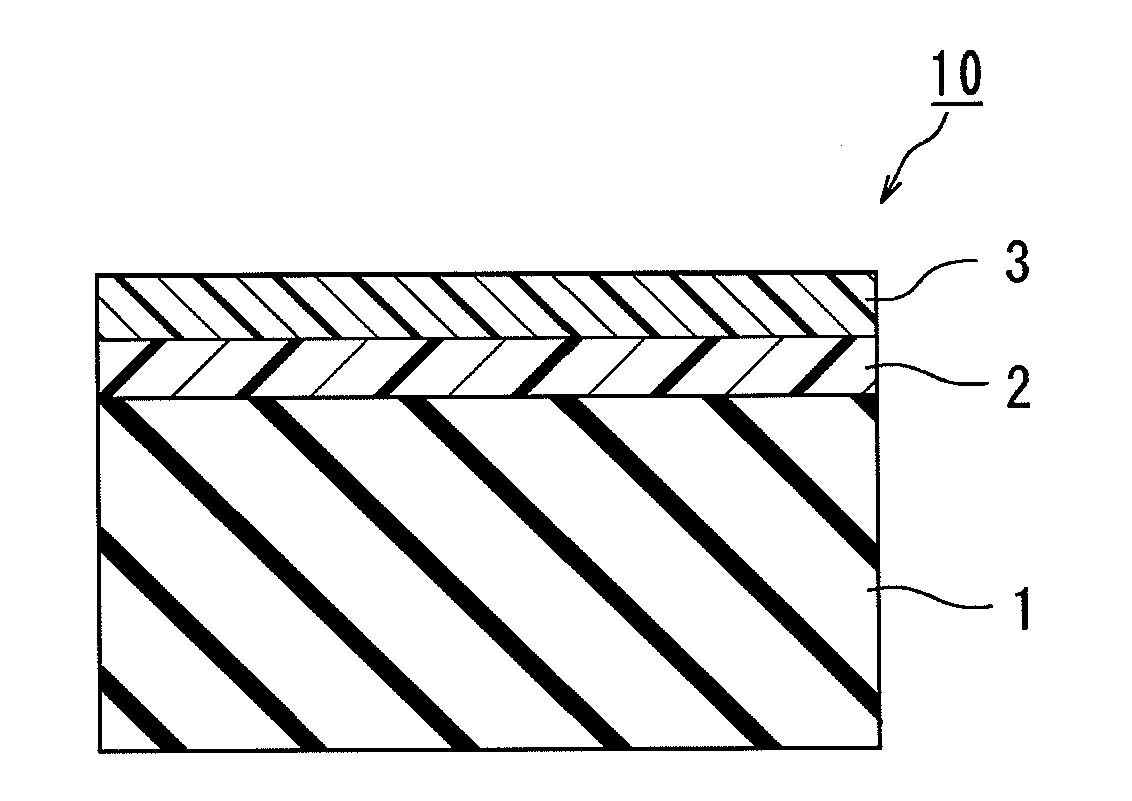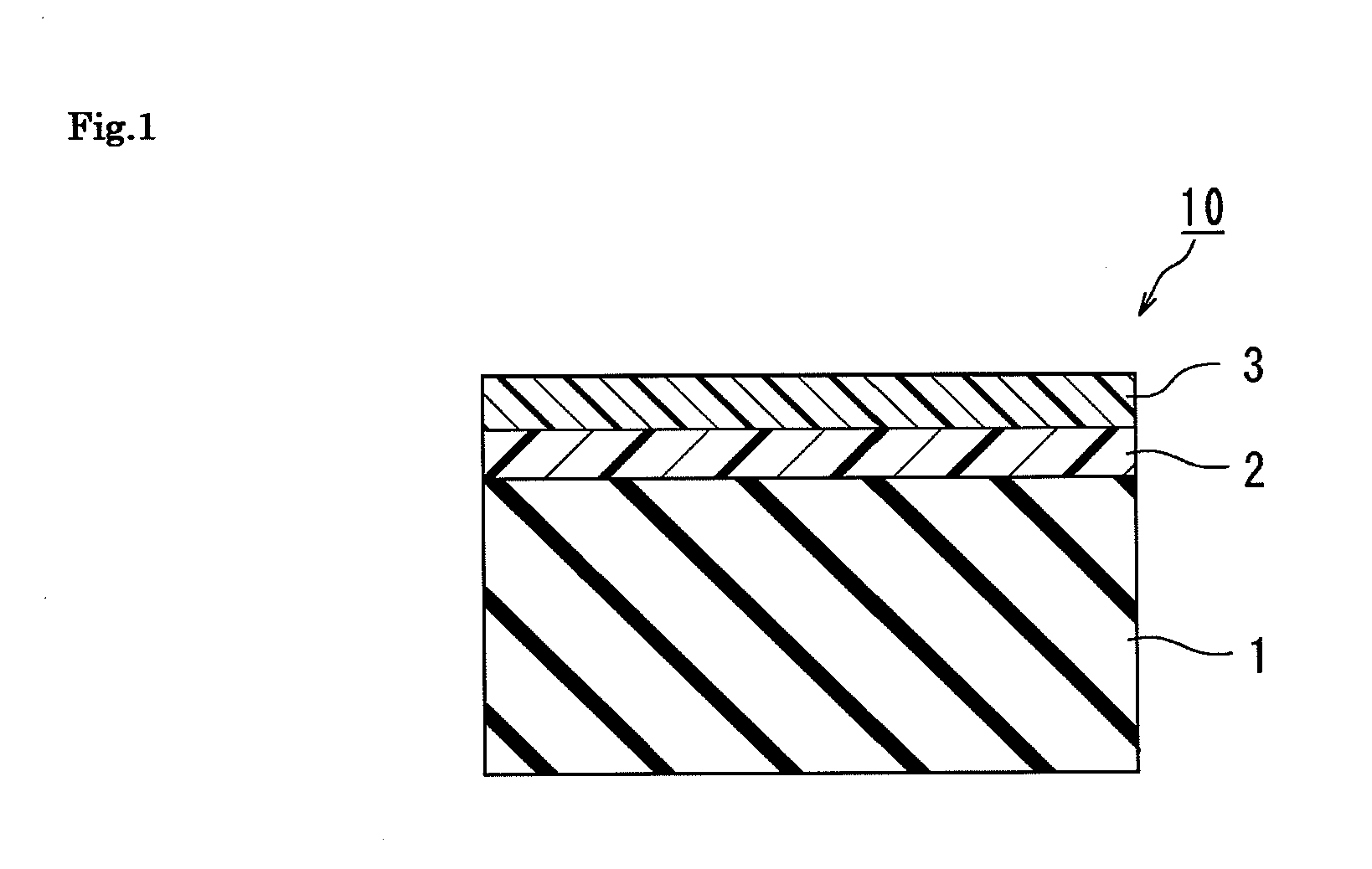Laminated film and pressure-sensitive adhesive tape
a technology of pressure-sensitive adhesive tape and laminated film, which is applied in the direction of film/foil adhesives, instruments, record information storage, etc., can solve the problems of uneven pattern of metal rolls, touch roll rubber surfaces, and molten resin winding around, etc., to achieve sufficient pressure-sensitive adhesiveness, excellent transparency, and large surface roughness
- Summary
- Abstract
- Description
- Claims
- Application Information
AI Technical Summary
Benefits of technology
Problems solved by technology
Method used
Image
Examples
example 1
[0153]The following compounds were prepared as a roughness-expressing layer-forming material, a fine unevenness-erasing layer-forming material, a base material layer-forming material, and a smooth layer-forming material.
[0154]Roughness-expressing layer-forming material: A mixture of 75 parts of a reactor TPO (Catalloy Q300F manufactured by SunAllomer Ltd.; melt flow rate (MFR)=0.8 (230° C., 2.16 kgf)) and 25 parts of a polypropylene obtained by using a metallocene catalyst (WINTEC WFX4 manufactured by Japan Polypropylene Corporation; melt flow rate (MFR)=7.0 (230° C., 2.16 kgf))
[0155]Fine unevenness-erasing layer-forming material: A low-density polyethylene (NOVATEC LD LC720 manufactured by Japan Polyethylene Corporation; melt flow rate (MFR)=9.4 (190° C., 2.16 kgf))
[0156]Base material layer-forming material: A block polypropylene (PF380a manufactured by SunAllomer Ltd.)
[0157]Smooth layer-forming material: A low-density polyethylene (NOVATEC LD LC720 manufactured by Japan Polyethyle...
example 2
[0159]A laminated film (2) was obtained in the same manner as in Example 1 except that the thickness of the roughness-expressing layer was changed to 5 μm. The fine unevenness-erasing layer had a thickness of 2 μm, the roughness-expressing layer had a thickness of 5 μm, the base material layer had a thickness of 38 μm, and the smooth layer had a thickness of 7 μm. Table 1 shows the results of the evaluation of the resultant laminated film (2).
example 3
[0160]A laminated film (3) was obtained in the same manner as in Example 1 except that the thickness of the roughness-expressing layer was changed to 10 μm. The fine unevenness-erasing layer had a thickness of 2 μm, the roughness-expressing layer had a thickness of 10 μm, the base material layer had a thickness of 38 μm, and the smooth layer had a thickness of 7 μm. Table 1 shows the results of the evaluation of the resultant laminated film (3).
PUM
| Property | Measurement | Unit |
|---|---|---|
| Temperature | aaaaa | aaaaa |
| Length | aaaaa | aaaaa |
| Length | aaaaa | aaaaa |
Abstract
Description
Claims
Application Information
 Login to View More
Login to View More - R&D
- Intellectual Property
- Life Sciences
- Materials
- Tech Scout
- Unparalleled Data Quality
- Higher Quality Content
- 60% Fewer Hallucinations
Browse by: Latest US Patents, China's latest patents, Technical Efficacy Thesaurus, Application Domain, Technology Topic, Popular Technical Reports.
© 2025 PatSnap. All rights reserved.Legal|Privacy policy|Modern Slavery Act Transparency Statement|Sitemap|About US| Contact US: help@patsnap.com



